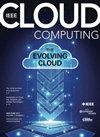复仇者集合!WebAssembly安全解决方案调查
Q1 Computer Science
引用次数: 3
摘要
WebAssembly,缩写为Wasm,由于其有前途的特性,已经成为云原生开发的新范例。本机执行速度和快速启动时间使Wasm成为基于容器的云应用程序的替代方案。然而,尽管WebAssembly采用了基于设计的安全策略,但它仍然存在各种各样的漏洞和弱点,这阻碍了它在云计算中的快速采用。例如,本机执行性能吸引网络犯罪分子滥用Wasm二进制文件,以窃取资源,如加密劫持。如果没有适当的防御机制,基于wasm的恶意软件就会扩散,给云用户造成巨大的经济损失。此外,允许类型不安全语言(如C/ c++)的设计原则固有地会在Wasm二进制文件中引起各种内存错误。有效和健壮的漏洞分析技术对于保护良性的云原生Wasm应用程序不被攻击者利用是必要的。然而,由于WebAssembly还很年轻,在文献中很少有作品为开发人员提供此类安全技术的指导。这使得开发人员在考虑将Wasm作为他们的云原生平台时犹豫不决。本文对文献中提出的各种Wasm二进制安全技术和方法进行了综述,并按照一定的标准对其进行了系统的分类。因此,针对目前WebAssembly二进制安全研究的不足,提出了未来的研究方向。本文章由计算机程序翻译,如有差异,请以英文原文为准。
Avengers, Assemble! Survey of WebAssembly Security Solutions
WebAssembly, abbreviated as Wasm, has emerged as a new paradigm in cloud-native developments owing to its promising properties. Native execution speed and fast startup time make Wasm an alternative for container-based cloud applications. Despite its security-by-design strategy, however, WebAssembly suffers from a variety of vulnerabilities and weaknesses, which hinder its rapid adoption in cloud computing. For instance, the native execution performance attracted cybercriminals to abuse Wasm binaries for the purpose of resource stealing such as cryptojacking. Without proper defense mechanisms, Wasm-based malware would proliferate, causing huge financial loss of cloud users. Moreover, the design principle that allows type-unsafe languages such as C/C++ inherently induces various memory bugs in an Wasm binary. Efficient and robust vulnerability analysis techniques are necessary to protect benign cloud-native Wasm applications from being exploited by attackers. Due to the young age of WebAssembly, however, there are few works in the literature that provide developers guidance to such security techniques. This makes developers to hesitate considering Wasm as their cloud-native platform. In this paper, we surveyed various techniques and methods for Wasm binary security proposed in the literature and systematically classified them according to certain criteria. As a result, we propose future research directions regarding the current lack of WebAssembly binary security research.
求助全文
通过发布文献求助,成功后即可免费获取论文全文。
去求助
来源期刊

IEEE Cloud Computing
Computer Science-Computer Networks and Communications
CiteScore
11.20
自引率
0.00%
发文量
0
期刊介绍:
Cessation.
IEEE Cloud Computing is committed to the timely publication of peer-reviewed articles that provide innovative research ideas, applications results, and case studies in all areas of cloud computing. Topics relating to novel theory, algorithms, performance analyses and applications of techniques are covered. More specifically: Cloud software, Cloud security, Trade-offs between privacy and utility of cloud, Cloud in the business environment, Cloud economics, Cloud governance, Migrating to the cloud, Cloud standards, Development tools, Backup and recovery, Interoperability, Applications management, Data analytics, Communications protocols, Mobile cloud, Private clouds, Liability issues for data loss on clouds, Data integration, Big data, Cloud education, Cloud skill sets, Cloud energy consumption, The architecture of cloud computing, Applications in commerce, education, and industry, Infrastructure as a Service (IaaS), Platform as a Service (PaaS), Software as a Service (SaaS), Business Process as a Service (BPaaS)
 求助内容:
求助内容: 应助结果提醒方式:
应助结果提醒方式:


